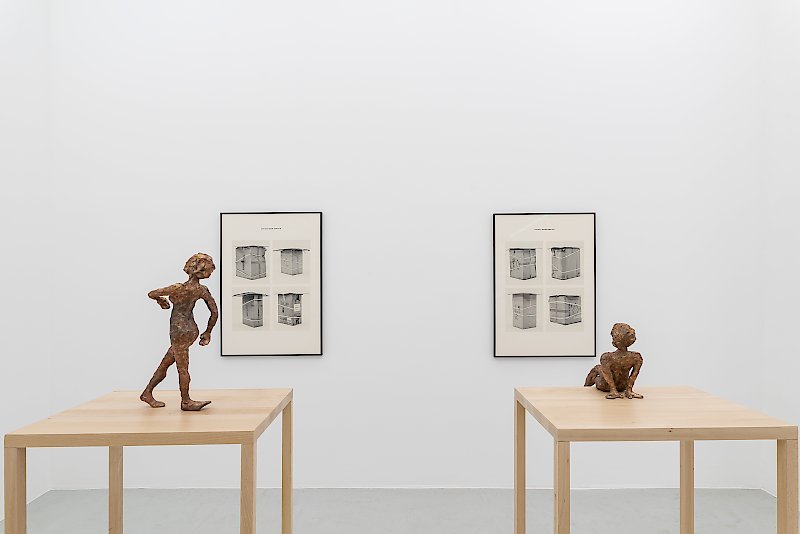Und ich singe absichtlich,
Weil ich nicht mag,
Was das Dunkel singt –
Vielleicht singt es
Gegen mich.
Ancient philosophers held the earth to be spherical. Before it was flattened by prejudice, before the Copernican revolution decentered it, our planet stood at the centre of the universe in a system made of spheres englobing one another. Little was known about the other side of the sphere when its name was found: with the term “antipodes”, from the ancient Greek ἀντίπους – opposite foot – a region of the world was named in which people, rightly so, were believed to stand with the feet opposite, as if reflected in a mirror. Over time the word shifted in meaning and the people of the other side, that nobody had ever seen, started to be depicted with inverted feet―either pointing opposite to the body or growing out of the head. A figure for the prejudice against that which is opposed and therefore potentially dissimilar, antipodes became the name for all that stands conceptually below. However, it was precisely to criticise the notions of above and below that more than two millenniums ago Plato first employed the term ἀντίπους: if we were to walk across the globe, the philosopher wrote in the Timaeus, our feet would be both above and below, and it would hence make no sense to use terms implying opposition to describe a place that is both up and down.
The relationship that defines us, according to the philosopher, is not to a privileged point of the surface but to the core: there is no more below or above when we understand that we are all equidistant from the centre. No matter where we live, the language we speak, our social status or physical connotations gravity pulls us all towards a same centre, and yet in our minds we tend to function according to simple parameters such as high and low, in and out, up and down, often forgetful of their relativity as well as their mutual inclusiveness. Ups and Downs of the Flipping Planet addresses the cultural construction of our ups and downs to suggest, thought the artworks on view, a flipping of perspective.
In this spirit Iván Argote (Bogotà, 1983) conceived his sculptures Antipodos. Human figures showing inverted feet, they were inspired by the 1493 Liber Chronicarum (Book of Chronicles, also known as Nuremberg Chronicle). An illustrated encyclopedia presenting a history of the world, the publication filled with imagination its gaps in knowledge, presenting the inhabitants of unknown lands with all sort of deformities, including the coexistence of male and female sexual connotations in a same body divided in two halves, and feet pointing backwards. Walking, sitting and laying down, these sculptures alter the perception of space not unlike water spinning unostensibly counterclockwise in the Southern hemisphere, hinting at a potential shift of direction as they make tangible the prejudice they turn over.
The same direction that Jojo Gronostay flipped when he created his brand DWMC operating on the threshold between art and fashion. The project appropriated the Ghanian expression Obroni Wawu (‚Dead white men's clothes‘) by which in the 1970s locals called the second-hand clothes arriving from the other hemisphere: so high was the quality of the clothing they would not believe they were just be given away for free, and assumed that the previous owner must have died. An art platform and a brand making use of second-hand clothes and dead stocks, DWMC that operates in Europe as it supports Ghanian design, whose development had been prevented by the arrival of second-hand clothes sent as charity by Europe.
And hands collaborate literally on Eliza Douglas’(New York, 1984) chimeric paintings, for which a first hand paints realistically what the artist cannot and a second hand, her own, adds more gesturally a limb or a piece of clothing. Only present through its extremities, in Douglas’ paintings the body bends and expands as if aiming at those places where above and below are just the same, its centre of gravity remaining unpainted. As if one’s life was a chimera whose centre belongs to nobody, not even to oneself, hands and feet connect directly in one of her work, skipping the centre. I Am All Soul, reads its title. Perhaps, because our soul is where everything flips.













